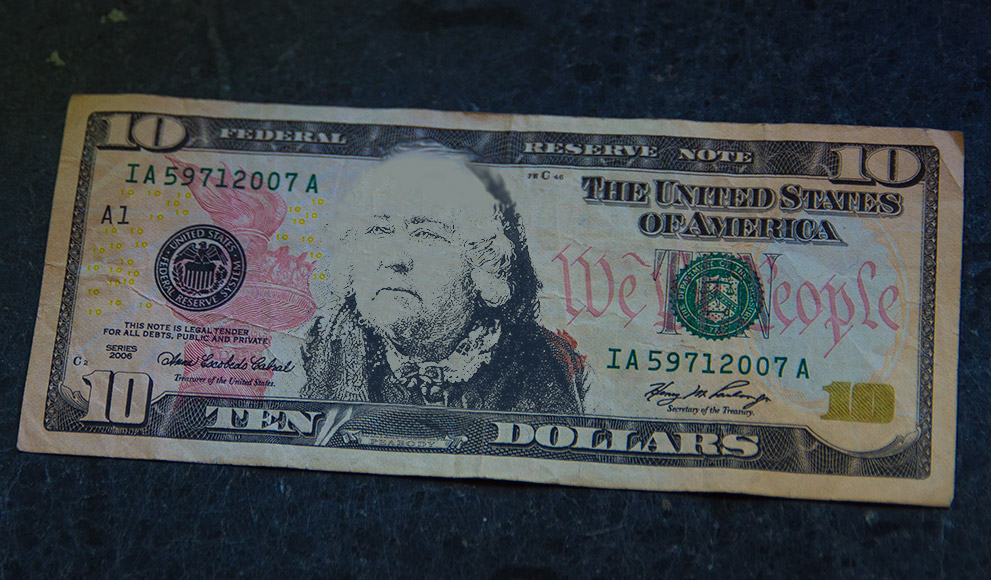The US Treasury is Soliciting Ideas for the New Face of the $10, Wellesley Faculty Members Share Their Suggestions.

The U.S. Treasury Department recently announced that a woman would be featured on the new $10 bill in 2020 and launched a public media campaign to solicit ideas. Popular suggestions, according to a recent USA Today poll, include former first lady Eleanor Roosevelt, civil rights icon Rosa Parks, abolitionist Harriet Tubman and suffragette Susan B. Anthony. We asked Wellesley faculty members who they would choose, and today we share their thoughts.
Barbara R. Beatty, professor of education
I would like to see Elizabeth Peabody (1804-1894) on the new $10 bill. A teacher, writer, and education reformer, Peabody started the first English language kindergarten in the United States, in Boston in 1860, and became one of the best known promoters of kindergartens for all children. She went to Germany to study Friedrich Froebel's kindergarten methods and published and wrote magazines and books about the kindergarten. Before her kindergarten activism, Peabody was a prominent Transcendentalist, who published The Dial, an important magazine for Transcendentalist literature. She was also an abolitionist and advocated for the rights of Native Americans. Peabody exemplifies so many forms of activism and played a key role in one of the most successful education reform movements, the kindergarten.
Kathleen Brogan, associate professor of English
The poet Wallace Stevens claimed that “Money is a kind of poetry,” perhaps because his beautiful wife Elsie was the model for the goddess Liberty on the Mercury dime minted in 1916. I am not convinced by Stevens, but I do like the idea of a poet on money and it is clear to me that that poet must be Marianne Moore.
One of the few major female poets in the modernist revolution at the start of the 20th century, Marianne Moore was a brilliant innovator, combining, in her many poems about the natural world, a fierce devotion to accuracy of detail and a startlingly prosaic, sometimes colloquial voice. Her gorgeous poems still stun. She was also an influential editor of the premier literary journal, The Dial, and mentored younger poets. She was pugnacious, fighting for virtues too little noticed: power held in restraint, and precision (better in her view than certitude). She embraced aspects of American popular culture. She loved baseball. She threw the ball to open the season at Yankee stadium in 1968. The Ford car company asked the famous poet to name a new make of car (alas, Ford stuck with his son’s name, Edsel, for this unlucky, poorly selling car, rejecting Moore’s suggestions, like “Utopian Turtletop” and “Andante con Moto.”) I think she would have loved the idea of appearing on the ten spot.
In her later years, Moore, embracing her celebrity, took to wearing a three-cornered hat and black cape at public occasions. Dressed in this way, she would be splendid on the ten-dollar bill, looking presidential. Move over, founding fathers, and make room for the founding mother of literary modernism.
Susan M. Reverby, Marion Butler McLean professor in the history of ideas; professor of Women’s and Gender Studies
Ella Baker was central to the civil rights movement of the mid 20th century, a behind the scenes advisor/teacher to thousands from Martin Luther King to the lowliest student worker, whose strategic and tactical sense and commitment to justice lasted a lifetime, changed out country, and taught us all.
James Oles, senior lecturer in art
I have no specific suggestion but would prefer they find someone in the arts or humanities for once: Emily Dickinson, Georgia O'Keeffe? Mexico has a bill with Frida on one side and Diego Rivera on the other. US currency is too much about leaders and political power. But anyway in our contentious society if they pick someone whose reach and influence was too narrow or who represents a narrow sector she will be criticized. The problem is that the shared "American" vision (a fiction) that led to the selection of those on current bills no longer exists. And so why not tie denominations to color and have rotating figures on all bills? [It] would really deter counterfeiters!
Do you have a suggestion? The US Treasury will review social media submissions using the hashtag #TheNew10, as well as comments posted to a dedicated part of the Treasury website. Treasury Secretary Jack Lew will announce the decision later this year.
By Grace Li '17
